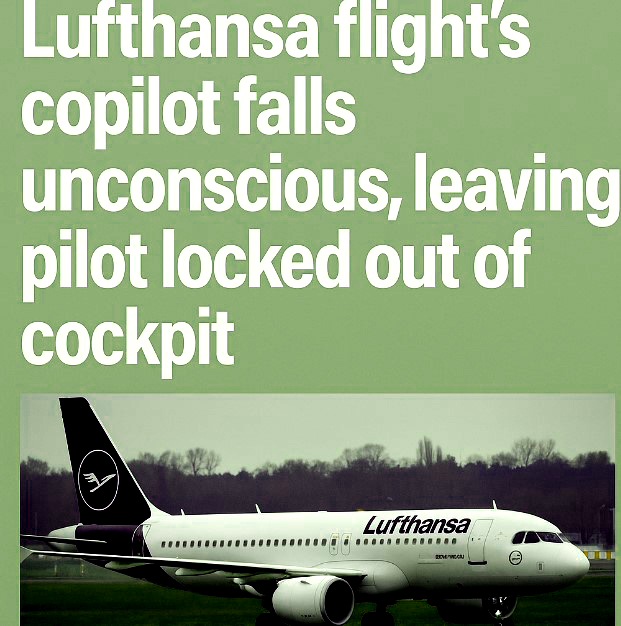Meta Description: In February 2024, a Lufthansa flight faced a critical situation when the co-pilot lost consciousness, leaving the pilot locked out of the cockpit for 10 minutes. Explore the full incident, safety protocols, and implications for aviation security.
Table of Contents
- Introduction
- Incident Overview
- Timeline of Events
- Medical Emergency and Response
- Cockpit Security Protocols
- Autopilot Functionality
- Emergency Landing in Madrid
- Investigation Findings
- Comparisons to Past Incidents
- Implications for Aviation Safety
- Conclusion
Introduction
In February 2024, a Lufthansa Airbus A321 on a flight from Frankfurt to Seville experienced an emergency relevant to pilot incapacitation: the co-pilot became unconscious while the captain was out of the cockpit and the aircraft had no pilot control for roughly 10 minutes. The event has raised serious concerns regarding cockpit security measures and monitoring of pilot health.
Incident Overview
The flight had 199 passengers and 6 crew members onboard when cruising at altitude. The captain left the cockpit for a short period of time. During the time the captain was out of the cockpit, the 38-year-old co-pilot experienced a medical emergency and became unresponsive. The captain returned to the cockpit but was locked out and could not get in right away.
Timeline of Events
- Captain Leaves Cockpit: The captain exits the cockpit to use the restroom.
- Co-Pilot Becomes Unresponsive: The co-pilot suffers a seizure, rendering him unconscious.
- Captain Attempts Re-Entry: The captain tries to re-enter the cockpit using standard and emergency codes but is unsuccessful.
- Autopilot Maintains Flight: The aircraft continues on autopilot without manual control.
- Co-Pilot Regains Consciousness: The co-pilot partially recovers and opens the cockpit door.
- Captain Reassumes Control: The captain re-enters the cockpit and decides to divert the flight to Madrid.
Medical Emergency and Response
The co-pilot lost consciousness in-flight and was later reported as having a seizure due to an undiscovered neurological condition. Once he regained partial consciousness, he was disorientated but able to open the cockpit door. He was examined by a medical person and eventually transported to a hospital to conduct further medical evaluation after managed to land the plane.
Cockpit Security Protocols
Post 9/11 measures have reinforced cockpit doors, which can now be locked while the co-pilot and captain are within the cockpit. Taken together those measures certainly to secure the cockpit better than before, but questionable for emergencies where a pilot can’t respond. In this incident, the captain was unable to gain access to the cockpit, highlighting where protocols could threated safety.
Autopilot Functionality
Most modern aircraft have autopilot capability to maintain the aircraft’s parameters for flights, without any manual intervention by the pilot. The autopilot successfully maintained flight parameters for 10 minutes, managing to stabilize the aircrait and avoiding disaster. This incident demonstrated the value of automated systems for crew and passenger safety.
Emergency Landing in Madrid
Once the captain regained control of the aircraft, the captain declared a medical emergency and diverted to Madrid. The aircraft landed safely, and the emergency services were there to assist the co-pilot as the passengers were informed of the situation and bused onward.
Investigation Findings
Spanish aviation accident investigators determined that the co-pilot had no prior medical history that would indicate a chance of seizures. The co-pilot’s actions were seen in light of a rare and unpredictable medical event. Recommendations were made to review cockpit access and consider protocols that ensure a minimum of two crew members are in the cockpit at all times.
Comparisons to Past Incidents
This incident is in line with the 2015 accident of Germanwings Flight 9525, where the co-pilot intentionally locked the captain out of the cockpit, and crashed the aircraft. And in the aftermath of the Germanwings accident, several airlines adopted a “two-person cockpit rule,” so that two crew members are always in the cockpit, however, over time the rule was reduced or removed by some airlines. The recent incident with Lufthansa has opened up conversations regarding the need for a rule like this once again.
Implications for Aviation Safety
The incident underscores the difficult balance that aviation authorities need to strike between ensuring cockpit security and allowing for limited emergency access. There is a need for:
• Expanded Medical Screening: Doctors continually assess and test for psychiatric/medical issues in pilots to stay ahead of potential problems.
• Review Access Policy to Cockpit: The two-person cockpit rule reinstated or strengthened.
• Develop Better Emergency Protocol: Emergency procedures that allow timely access into the cockpit without compromising security.
Conclusion
The incident with the Lufthansa flight is a stark reminder of how nuanced aviation safety considerations can be. Although there are much more safety with advancements in technology, such as autopilot systems in commercial aircraft, humans are difficult to control. Authorities need to prioritize the continual examination of safety guidelines and keep the evolving challenges of safety in the forefront to ensure passenger safety.
SEO Keywords: Lufthansa flight incident, co-pilot unconscious, pilot locked out, cockpit security, aviation safety, autopilot system, emergency landing, pilot health screening, two-person cockpit rule, aviation protocols.
![]()

